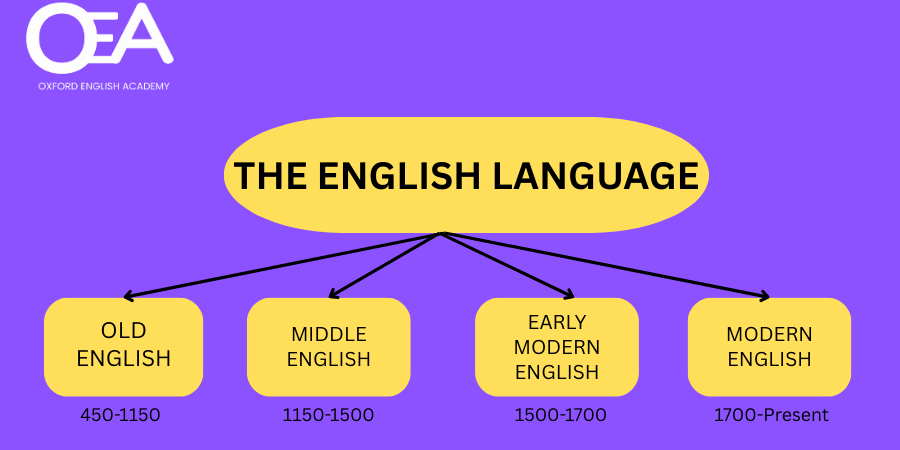The current form of the English language is the outcome of centuries of technical influence, invasions, cultural interchange, and evolution. What began as a cluster of Germanic dialects spoken by a handful of tribes has grown into one of the most widely spoken and studied languages in the world. But how did this transformation happen? Let us travel through time to examine the English language’s intriguing development.
1. Old English (450–1150 AD): The Roots of the Language
Around the fifth century, three Germanic tribes—the Angles, Saxons, and Jutes arrived in Britain, marking the beginning of English. These tribes brought with them their own dialects, which formed the foundation of Old English. This early version of the language was vastly different from the English we speak today. In fact, a modern English speaker would struggle to understand it.
Words like “cyning” (king) and “hwæt” (what) were common, and the grammar was complex, with cases and gendered nouns, similar to modern German.
2. Middle English (1150–1500): The French Connection
The Norman Conquest of 1066 had a profound impact on English. The Normans, who spoke Old French, became the ruling class in England, and for the next several centuries, French heavily influenced English vocabulary, especially in areas like law, government, art, and cuisine.
This period gave rise to Middle English, the language of Chaucer’s Canterbury Tales. Spelling and pronunciation began to shift, and Latin also made its mark, particularly through the Church.
Common English words like court, justice, beauty, and cuisine entered the language during this time.
3. Early Modern English (1500–1700): Standardization and Shakespeare
The invention of the printing press by William Caxton in 1476 was a turning point. It helped standardize spelling and grammar, making written English more consistent.
This era also coincided with the English Renaissance, during which writers like William Shakespeare enriched the language with thousands of new words and phrases. Many expressions we still use today, such as “break the ice” or “wild-goose chase”, come from his works. The Great Vowel Shift, a major change in pronunciation, also occurred during this time, helping shape how English sounds today.
4. Modern English (1700–Present): Global Expansion
The lexicon and grammar of English had stabilized by the 18th century. Dictionaries, like Samuel Johnson’s A Dictionary of the English Language (1755), helped standardize meanings and usage.
The spread of English from India to the Caribbean, Africa to Australia, was greatly aided by the British Empire’s growth. Each region added its own flavor to the language, creating new dialects, accents, and vocabularies.
In the 20th and 21st centuries, American English emerged as a global force, largely due to the United States’ political, cultural, and technological influence. Pop music, the internet, social media, and Hollywood have helped make English the most widely used language in the world.
5.The Future of English: Constantly Changing
English continues to evolve. New slang, tech jargon, and even emoji have influenced how we communicate. Phrases like “ghosting,” “YOLO,” and “streaming” weren’t in our vocabulary just a few decades ago.
Artificial intelligence, global migration, and digital communication will likely continue to shape the way we use English in the future—making it more flexible, inclusive, and dynamic.
English’s development from its tribal roots to its present day global standing is evidence of human adaptability and cross-cultural interaction. It is a living, breathing language that changes with time, shaped by the people who speak it.
So the next time you say “hello,” just remember—you’re speaking a language that’s taken over 1,500 years to reach your lips.
